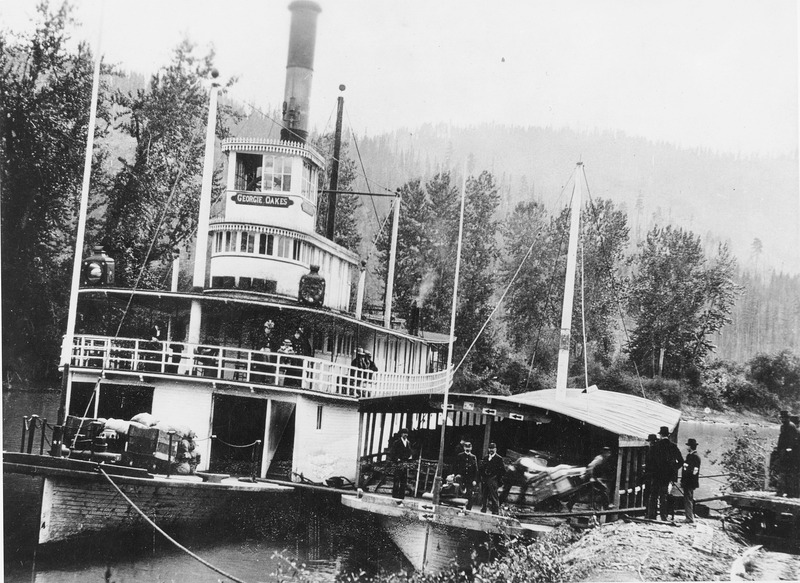It was in 1880 that the age of steamboat travel in the Coeur d’Alenes of northern Idaho began. For over a decade steamboats formed a valuable link between the gold and silver mining region and the rest of the world as it quickly became apparent that the key to the region’s future hinged on the development of reliable transportation. The transition to hard-rock silver mining fueled the territory’s development and required a complex transportation system necessary to maintain it.
The valuable silver ore would begin its journey on a narrow gauge railroad from the mines to the waterfront where it would be transferred into the deep hulls of the steamboats. Once loaded, the ore would be steamed the length of Lake Coeur d’Alene to the awaiting Northern Pacific Railroad cars in the city of Coeur d’Alene, Idaho. This lucrative trade, which could make a ship owner over $2,000 in a single trip, was short lived as the severe impact of the 1893 depression and an improved railroad system virtually ended the steamboats’ ore hauling days on the lake.
This was not to be the end of these graceful boats. The rugged frontier country enticed new money from an unlikely source, tourism. During the 1890’s the old ore carriers were quickly transformed into excursion boats offering luxurious trips on the “shadowy” St. Joe River and around scenic Lake Coeur d’Alene. The highly promoted trips promised the “tired and overworked” urban businessman and his family an invigorating cruise full of “clear vigorous mountain air, pure spring water, with a menu of trout, grouse, venison and wild fruits.” The Georgie Oakes, named for the daughter of Northern Pacific president Thomas F. Oakes, had the longest reign of the old river boats. Nicknamed the “Grande Dame,” the Georgie Oakes was a popular excursion boat after her ore hauling days were over. She is pictured here at the old Cataldo Mission landing in a transitional stage, as both passengers and cargo share her deck. The smaller barge next to the Georgie Oakes is the hull of the old ore carrier Coeur d’Alene, whose cabins and superstructure were transferred to a larger hull in 1891 and named the Georgie Oakes. The barge is being used as a portable dock as the river bank is too shallow for direct unloading. Off to the far right the old narrow gauge railroad remains to transport people and materials to and from the remote silver mines.
Written in May 1996 for the library’s Digital Memories website.
Photograph selected, and text written, by photograph intern Stuart Robb.
Caption: Georgie Oakes (Steamboat), University of Idaho Library, Historic Photograph Collection, #6-96-7d.


